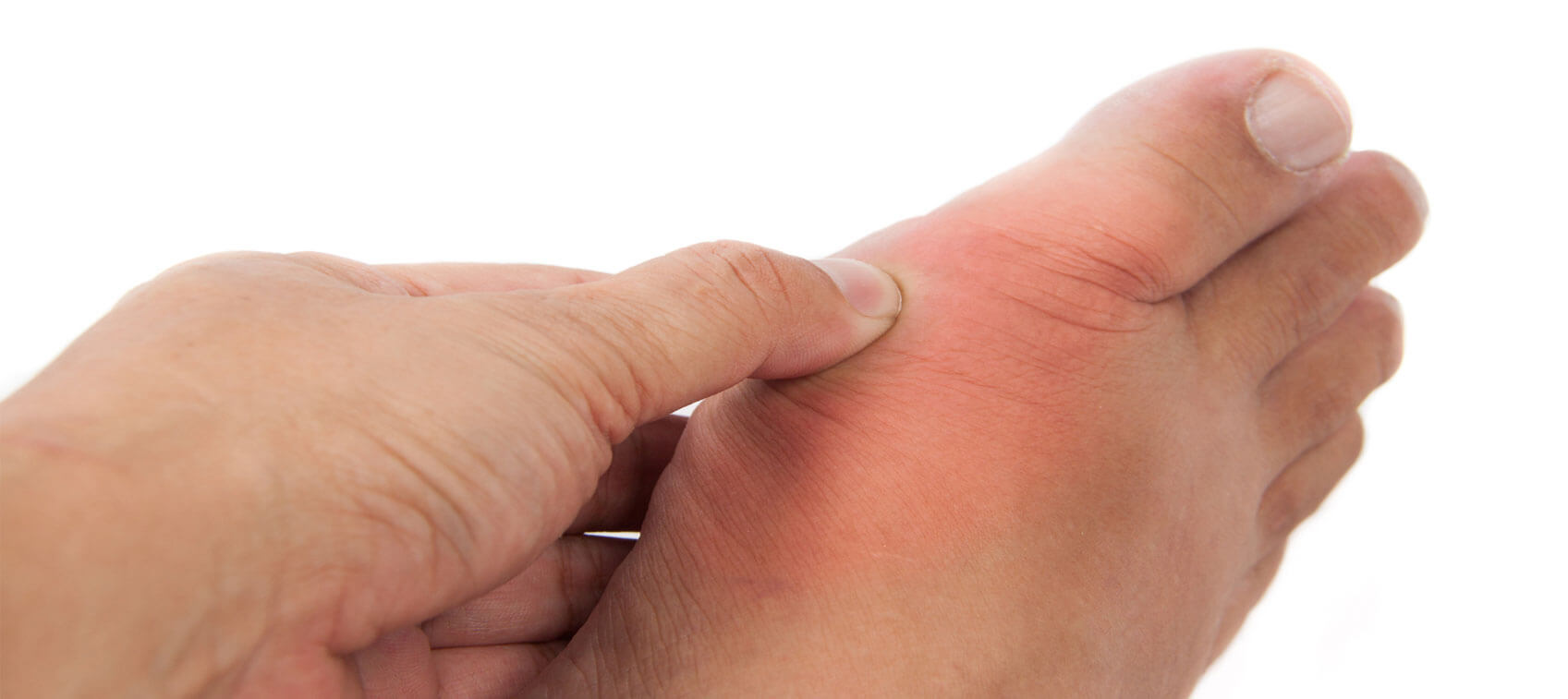
Once referred to as the “disease of kings,” gout can be a royal pain. A form of arthritis, gout is caused by a buildup of uric acid in the blood (hyperuricemia) that forms crystals in the joints. Gout pain can be excruciating, and people who have one attack are likely to have another. All joints can be affected, but gout typically occurs in the big toes.
Diabetes and Gout
Interestingly, diabetes and gout appear to be connected. If you have gout, then your chances of having diabetes or developing it in the future are above average. Although gout is considered to be a type of arthritis because it is marked by pain and swelling in the joints, it is also a metabolic disorder. But why does uric acid build up in the first place? That’s where the diabetes link comes in.
Metabolic syndrome is a cluster of conditions that increase the risk of diabetes, heart disease, stroke, and, as it turns out, gout. These conditions include abdominal obesity, insulin resistance, elevated blood sugar, hypertension, inflammation—and hyperuricemia.
Preventing Gout Attacks
One of the easiest ways to treat gout naturally is to examine the types of foods you are eating. Known dietary triggers for gout include red meat and alcohol in excess. Other foods that appear to spur gout attacks include organ meats, beans, shellfish, and beer.
While these traditional dietary factors certainly play a role, research reveals that a decades-old diet designed to lower blood pressure may be a key to treating gout. Scientists reviewed data on the DASH diet (a focus on plant foods, low-fat dairy, and reduced overall fat intake) and found that subjects who followed this eating plan for three months saw reductions in uric acid levels similar to those achieved by drugs such as allopurinol that are used to treat gout. Anything you can do to lower your uric acid levels helps prevent gout from occurring in the first place.
Fructose has also been linked to gout attacks. Soft drinks, fruit juices, and many processed foods containing high-fructose corn syrup and other sugars (which are also loaded with fructose). Read labels carefully and severely limit your intake or avoid consuming these items altogether.
Now that you know what to avoid, the good news is that several foods have been shown to actually help to treat gout naturally. First and foremost are cherries, which are rich in phytonutrients that have potent anti-inflammatory and antioxidant activity.
In a clinical trial, trained cyclists took either a tart cherry concentrate or a placebo twice a day for eight days and, on the fifth day, completed an intense racecourse. When they were tested afterward, the cyclists who had taken cherry juice recovered faster and had lower markers of inflammation and oxidative stress.
Cherries also reduce arthritis pain and the intensity and frequency of gout attacks. Boston University researchers found that when people ate a cup and a half of cherries within two days of a gout attack, recurrence was reduced by 35 percent.
Fresh cherries are seasonal and pricey, but frozen cherries, tart cherry juice, concentrates, and extracts pack a similar health punch. Other dark-colored berries such as blueberries and blackberries also contain these protective compounds.
Coffee is also protective, as it decreases levels of uric acid. And vegetables are rich in protective phytonutrients, antioxidants, and a host of other compounds that benefit overall health and help prevent all types of disease and illness—including gout.
On the supplement front, be sure to include nutrients that curb inflammation, which in turn reduces pain. This includes curcumin (500 mg as needed) and fish oil (at least 2,000 mg per day), as well as vitamin C (500 mg two to three times a day) and quercetin, a flavonoid that hinders the production of uric acid (500 mg 2–3 times a day).
As for controlling blood sugar, regular exercise, weight loss, a low-glycemic/low-sugar diet, and a solid supplement regimen protect against all aspects of metabolic syndrome. Work on controlling these risk factors, and you can dramatically reduce your risk of gout.


